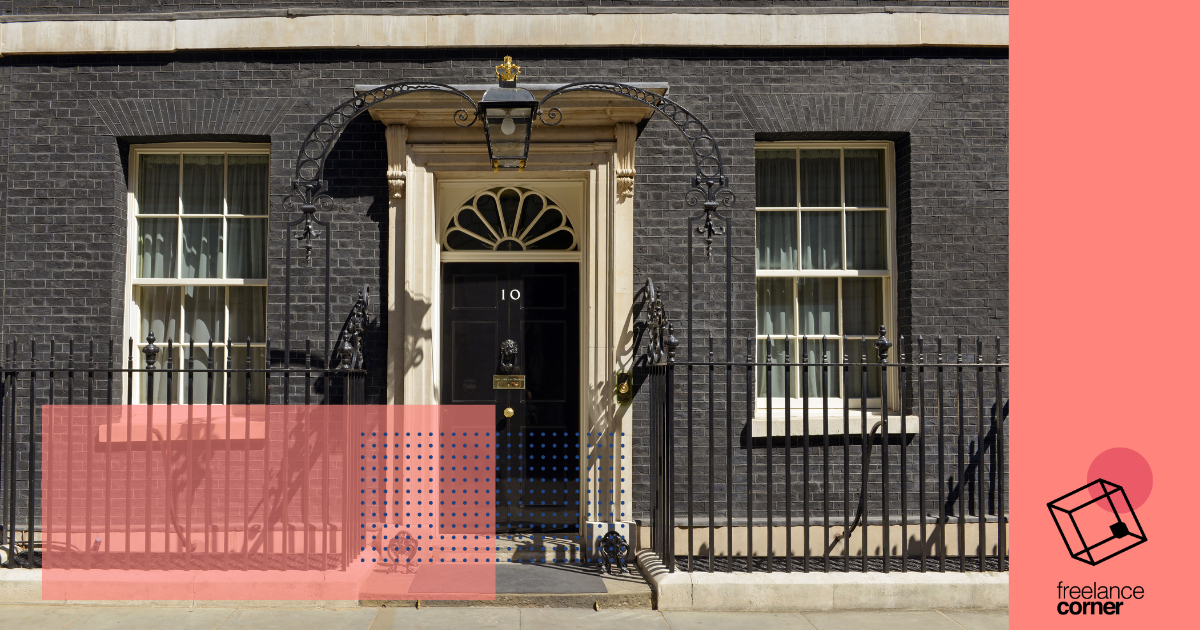Want to bring art to life, and be your own boss? Find out how to become a freelance animator and build your career.
Freelance animators work in a range of fields, including advertising, film and TV, videogames and more. The growth of Youtube and other video platforms has also increased demand for self-employed artists able to provide animation across a wide variety of genres.
And by working for yourself, it gives you the potential to pick and choose the projects you want to work on, along with your working hours, location and other aspects of earning a living. You might want to ring fence some of your time to devote to your own projects, alongside client work.
What does a freelance animator do?
The work of a freelance animator will begin at the concept stage, working with clients to develop their ideas into something which will work in print or on screen.
This can mean creating sketches and storyboards to plan the frame-by-frame illustrations, collaborating with other artists and editors, along with any research and other information you need. Once all that’s in place, you can start work on the animation itself, before responding to any feedback on edits and alterations.
You may work by hand, or often using computer aided design and animation tools. And it’s possible to specialise in one particular area (e.g. characters, backgrounds etc), if you’re working as part of larger animation teams. And it may involve recording dialogue and working with editors to composite everything and produce finished work.
This will be slightly different if you’re able to make an income by creating and sharing your own work via outlets such as Youtube or Vimeo, for example. Or you branch out to create your own courses, training or tools for other animators.
But as with any freelance career, you’ll also need to manage your business, and stay up to date with the latest industry trends and techniques.
What types of freelance animator exist?
Within animation, there are various niches that you might want to pursue. Some of the main fields within the industry include:
- 2D animation
- 3D animation
- Celluloid animation
- Motion Graphics
- Stop Motion Animation
The first two are fairly self-explanatory, but cel animation refers to the once-common process of working on transparent plastic sheets which were photographed in sequence over a background. This has largely been phased out by film studios and other large scale commercial work, but some animators continue to produce incredible results using more traditional methods.
Motion graphics refers to footage which has text as a major element, in film title sequences for example. While stop motion animation involves moving physical objects in tiny amounts between frames to create movement.

What skills or qualifications do you need?
The most important factor in securing work as a freelance animator will be your portfolio, showcasing your best projects. Whether you’re self-taught or formerly educated, demonstrating a solid record of work and experience will be key in securing freelance clients. Along with listing projects, you should also create a short demo reel around 60 seconds of your most amazing original work.
But how can you get started in animation without previous experience? A range of UK universities offer animation degrees, which will cover illustration, visual communication, digital film and animation, and more to prepare you for employment in film, TV, advertising and computer game production. Entry requirements will vary, but you’ll typically need to have studied Art and Design, along with having a portfolio of student work.
You can also study animation for a BTEC diploma at levels equivalent to GCSEs and A-Levels, providing a route into higher education or employment. Many of the degree and BTEC courses will include an element of professional experience, giving you the opportunity to experience working for real studios and clients.
Along with academic qualifications, you can also look at industry courses and certification, with resources available through sites like ScreenSkills, and the British Film Institute (BFI). And you can find various animation courses and training through other providers, but always research the provider, syllabus and topics, as well as the potential benefits you should expect.
The main skills you need will depend on the medium you’re working in, whether that’s using clay, oil paints, or software such as Blender, Autodesk Maya, or Unity. But drawing and illustrating will always be necessary, whether or not you’re sculpting physical characters or rendering a 3D model.
As a freelancer, you’ll also need to be resourceful, organised, and able to communicate with clients and collaborators. In addition to managing deadlines and the financial side of your career, you’ll also need to be your own IT department if anything goes wrong.
How much can you earn as a freelance animator?
Animation is a global industry, and income can vary by location, speciality, and the current level of demand. Freelancer rates will also vary according to your experience, skills in negotiation, and between projects, so any figures are offered as a broad guide.
For employed wages, entry-level positions will usually be around £12,000 to £15,000 or slightly higher in the videogame industry. And after 10 years, you’ll potentially be earning around £36,000 (Prospects)
By comparison, the average income from a freelance animator in the UK is £34,979 (Glassdoor), £54,600 (Talent), or across employed and freelance jobs £37,842 (Indeed), or £42,500 (Totaljobs).
Average incomes for freelancers will tend to be slightly higher due to the need for the self-employed to cover their own insurance, equipment, sick days and holiday time (you can get discounts on insurance and other benefits via IPSE membership). And because most freelancers will tend to have gained some full-time paid experience before starting out on their own.
As a guide to freelance day rates, you can find a helpful guide for animation and VFX via the Broadcasting, Entertainment, Communications and Theatre Union (Bectu), and their Animation and Visual Effects Union branch.
These figures will also tend to just include paid client work, and not any advertising, affiliate or direct revenue from you sharing your own work on video sites. Or from creating your own paid training resources or tools for other people.

What equipment do freelance animators require?
Every individual freelancer has their own opinions and preferences for essential equipment in their career. But a quick checklist can help if you’re planning your budget, or deciding on the next investment in your home studio.
- Pens, pencils, sketch pads – timeless essentials.
- Stylus pen and graphics tablets – replacing the pen and sketchpad. A huge range is available from a variety of brands, including the fairly ubiquitous Wacom products associated with graphics tablets.
- Drawing gloves – rather than the risk of smudging your pencil or ink creations, now they’re to stop accidental inputs on your tablet.
- Desk, chairs and drawing tables – one of the joys of freelancing is creating your own workspace and investing in ergonomic, comfortable furniture will help your health and productivity
- Computer – for animation, it will make sense to invest in your graphics card, processor, RAM and storage space. Along with large, quality monitors if you’re spending hours staring at screens.
- Back-up storage – external hard drives and online cloud storage will prevent work being lost in the event of hardware failure or theft. Multiple backups are often a good idea if possible.
- Animation software – there’s a huge range of free and paid animation tools available, with examples including Adobe Animate, Adobe After Effects, Autodesk, Blender, Flipbook and many more.
- Headphones and speakers – if you’re devoting time to syncing audio and animation, then quality is important. And comfort, when you might be wearing headphones for large parts of each day.
More resources and support to become a freelance animator
Researching other freelance careers? Why not check out our other guides:
- How to become a freelance photographer
- How to become a freelance web designer
- How to become a freelance writer
- How to become a freelance Virtual Assistant (VA)
- How to become a freelance SEO consultant
- How to become a freelance structural engineer
- How to become a freelance business analyst
- How to become a freelance event planner or organiser
- How to become a freelance coach
- How to become a freelance proofreader
- How to become a freelance bookkeeper
- How to become a freelance content creator
- How to become a freelance illustrator
- How to become a freelance hair stylist
- How to become a freelance recruiter
- How to become a freelance translator
- How to become a freelance editor
- How to become a freelance photojournalist
- How to become a freelance WordPress developer
- How to become an author
- How to become a freelance tutor
- How to become a freelance makeup artist
- How to become a freelance music producer
- How to become a freelance photo editor
- How to become a freelance model
- How to become a freelance digital marketer
- How to become a freelance network engineer
- How to become a freelance chef
- How to become a freelance fundraiser
- How to become a freelance data scientist
- How to become a freelance graphic designer
- How to become a freelance accountant or financial consultant
- How to become a freelance interior designer
- How to become a freelance personal trainer
- How to become a freelance HR consultant
- How to become a freelance filmmaker
- How to become a freelance transcriptionist
- How to become a freelance game developer
- How to become a freelance first aid trainer
- How to become a freelance video editor
- How to become a freelance project manager
- How to become a freelance musician
- How to become a freelance massage therapist
- How to become a freelance social media manager
- How to become a freelance 3D artist or modeller
- How to become a freelance AI prompt engineer
- How to become a freelance dog groomer
- How to become a freelance location scout
And you can get support and help if you’re starting out with self-employment, or still in the early stages of building your career, with the IPSE Incubator. The 12-month programme is currently free with IPSE membership, and includes advice, events, webinars, networking and more, tailored to anyone just beginning their freelance business.






